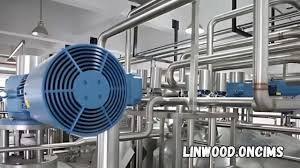Introduction
In our data-driven world, businesses and individuals need storage solutions that offer both speed and capacity without compromising cost-efficiency. Hybrid Storage emerges as the perfect solution, blending the performance of SSDs with the affordability of HDDs. This guide will explore everything you need to know about Hybrid Storage, from its fundamental concepts to real-world applications.
What is Hybrid Storage?
Hybrid Storage is an intelligent storage architecture that combines flash-based SSDs (Solid State Drives) and traditional HDDs (Hard Disk Drives) in a single system. This combination allows for automatic data tiering, where frequently accessed data (“hot data”) resides on faster SSDs, while less-accessed data (“cold data”) moves to more economical HDDs.
The result? Optimal performance for active workloads and cost-effective storage for archival data – all managed automatically without user intervention.
How Does Hybrid Storage Work?
Hybrid Storage systems use sophisticated algorithms to manage data placement dynamically. Here’s the process:
- Data Monitoring: The system continuously tracks how frequently data is accessed.
- Automatic Tiering: Frequently used data gets promoted to SSDs, while rarely used data gets demoted to HDDs.
- Seamless Access: Users experience fast performance without needing to manually manage storage locations.
This intelligent data management happens transparently in the background, ensuring optimal performance while maximizing cost efficiency.
Key Components of Hybrid Storage
1. Solid-State Drives (SSDs)
The performance powerhouse of Hybrid Storage, SSDs offer:
- Lightning-fast read/write speeds
- Lower latency
- Better reliability (no moving parts)
- Higher cost per GB compared to HDDs
2. Hard Disk Drives (HDDs)
The capacity workhorses provide:
- Significant cost savings for bulk storage
- Higher capacities (up to 20TB+ per drive)
- Slower access times
- Mechanical components that can fail
3. Storage Controller
The brain of the system that:
- Monitors data access patterns
- Makes tiering decisions
- Manages data movement between tiers
4. Tiering Software
Advanced algorithms that:
- Analyze usage patterns
- Predict future access needs
- Optimize data placement automatically
5 Powerful Benefits of Hybrid Storage
1. Optimized Performance
By keeping active data on SSDs, Hybrid Storage delivers near-instant access to frequently used files and applications.
2. Cost Efficiency
Achieves 90% of SSD performance at 50% of the cost of all-flash solutions by strategically using HDDs for less-critical data.
3. Scalable Architecture
Easily expand both performance (by adding SSDs) and capacity (by adding HDDs) as needs grow.
4. Energy Savings
Reduces power consumption by up to 40% compared to all-HDD arrays through intelligent spin-down of unused drives.
5. Simplified Management
Automated tiering eliminates manual data placement decisions, reducing IT overhead by hundreds of hours annually.
Hybrid Storage vs. Traditional Storage: Key Differences
| Feature | Hybrid Storage | All-SSD Storage | All-HDD Storage |
|---|---|---|---|
| Performance | Excellent (for hot data) | Exceptional | Poor |
| Cost | Moderate | High | Low |
| Capacity | Virtually unlimited | Limited | Massive |
| Best Use Case | Mixed workloads | Performance-critical | Archive/cold storage |
| Power Usage | Efficient | Moderate | High |
Real-World Applications of Hybrid Storage
1. Enterprise Data Centers
- Accelerates virtual machines and databases
- Reduces storage costs by 30-50% compared to all-flash
- Ideal for SAP, Oracle, and SQL Server workloads
2. Media Production
- Fast access to current project files (SSD)
- Affordable storage for completed projects (HDD)
- Used by Adobe Premiere, DaVinci Resolve workflows
3. Cloud Storage Providers
- Offers performance tiers at competitive prices
- Used by AWS, Azure, and Google Cloud for storage services
- Enables cost-effective object storage solutions
4. High-Performance Computing
- Balances speed and capacity for research data
- Used in genomics, financial modeling, AI training
- Reduces time-to-results while managing costs
Future Trends in Hybrid Storage
1. AI-Optimized Tiering
Machine learning algorithms will predict data usage patterns with greater accuracy, further optimizing performance.
2. QLC SSD Adoption
Quad-Level Cell SSDs will make flash storage more affordable, expanding hybrid capabilities.
3. Computational Storage
Processing power moving into storage devices will enable real-time analytics on stored data.
4. Hybrid Cloud Integration
Seamless blending of on-premises hybrid storage with cloud-based cold storage tiers.
FAQs
What types of businesses benefit most from Hybrid Storage?
Medium to large enterprises with mixed workloads see the greatest benefits, especially those with performance-sensitive applications but large data volumes.
How much performance improvement can I expect with Hybrid Storage?
Most users see 3-5x faster performance for active data compared to HDD-only systems, approaching 80-90% of all-SSD performance at half the cost.
Is data migration difficult when implementing Hybrid Storage?
Modern systems offer non-disruptive migration – your existing data automatically tiers itself based on usage patterns after implementation.
What’s the typical lifespan of a Hybrid Storage system?
With proper maintenance, expect 5-7 years of useful life, though SSDs may need replacement before HDDs in high-write environments.
Can Hybrid Storage work with virtualization platforms?
Yes, it’s particularly effective for VMware, Hyper-V, and Kubernetes environments where workload demands vary significantly.
How does Hybrid Storage impact backup strategies?
It simplifies backups by keeping active data consolidated on fast storage while archive data remains on high-capacity drives.
Conclusion
Hybrid Storage represents the perfect equilibrium in today’s storage landscape – delivering enterprise-grade performance at mid-range pricing. By intelligently combining the strengths of SSDs and HDDs, it solves the cost-performance paradox that has challenged IT managers for decades.
As data growth continues exponentially, Hybrid Storage stands as the most practical, scalable solution for organizations that refuse to compromise between speed and affordability. With AI-driven optimizations and QLC SSDs on the horizon, its value proposition will only strengthen in coming years.
For any business evaluating storage solutions, Hybrid Storage deserves serious consideration as it offers the best balance of performance, capacity, and cost available today.









